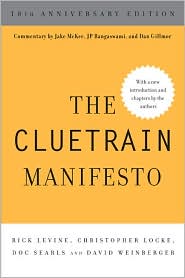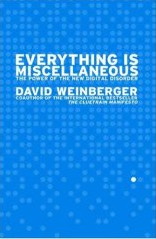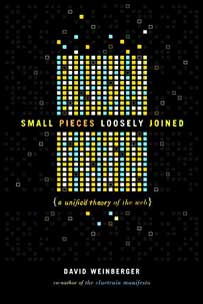October 8, 2008
Innovation and the Open Internet: Joi Ito
Joi Ito is giving a talk at a Copenhagen media conference. He says that he wants to show us the world the way it looks to an “Internet geek.” [Note: I’m live-blogging, and poorly. Full of mistakes and omissions.]
Way back when, it was difficult to connect computers. Then we got Ethernet, then TCP/IP, and then HTTP (the Web). These new layers allow participation without permission. The cost of sending information and the cost of innovation have gone down (because the cost of failure has gone down). Now we’re getting another layer: Creative Commons. “By standardizing and simplifying the legal layer … I think we will lower the costs and create another explosion of innovation.”
Most innovation on the Net comes about through small projects with lots of connections. E.g., Google could start up for a few thousands dollars without having to get bilateral agreements with countries, etc. Europe is getting more innovative because it’s easier to pull together the pieces and easier to participate in the worldwide conversation. Now we have to figure out how to let amateur innovation into the system.
Distribution used to be the biggest problem. Experts went into distribution. Now we’re in danger of losing that expertise. Bloggers can’t fly into distant places to do a story, and can’t protect themselves from libel suits. We need to stop fighting with one another and find a way for these professionals to survive.
Joi gives a subset of Larry Lessig’s copyright talk. We’ve gone from a mostly unregulated zone for books to a mostly regulated one, for every digital use requires making copies. The digital realm also enables more control. Creative Commons aims at the middle between all rights reserved and no rights reserved. CC wants to make it easier to negotiate rights. It’s a “user interface for copyright” so people can be clear about how they are willing to have their stuff used. Four major properties: Attribution, modification, commercial use, share-alike. 130M works use CC. “Star Wreck” is 100% collaborative, 8M downloads. Instead of distribution, it’s about discovery, and links help with this. And giving stuff away helps gets links. He points to Nine Inch Nails giving away an album, as well as selling collectors’ version of physical media.
CC is becoming part of the media infrastructure, he says.
In response to a question, he says that amateurs who reuse his photos generally give him credit, but professional media folks tend not to, because the latter assume money is the currency. We need to teach them that respect is, he says.
Q: Could CC be used in the real world?
A: Yes, it already is. There is a “materials transfer agreement” that lowers the friction for using, say, a mouse from another lab in an experiment.








